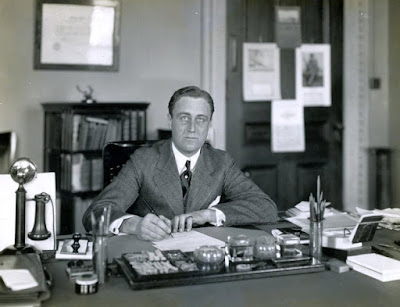 |
| SECDEF James Mattis visits Sailors in Bahrain in March. (MC1 Bryan Blair) |
When Secretary of Defense Gen. James Mattis announced his resignation this week it brought to mind the farewell speech by President George Washington, who similarly expressed his support to the Constitution, desire for other nations to become free allies, and rejection of totalitarianism.
Unlike Mattis's letter, George Washington's speech is typically dense, layered and flowery, which was the traditional style of writing at the time. Washington expresses his deep gratitude and offers this wish:
Interestingly, just 65 years before the Civil War, Washington seems to see the coming divisions of North and South as well as differences between East Coast and the American West. He seems to present an early maritime strategy and an understanding of how trade and commerce can create national unity."... that your union and brotherly affection may be perpetual; that the free Constitution, which is the work of your hands, may be sacredly maintained; that its administration in every department may be stamped with wisdom and virtue; that, in fine, the happiness of the people of these States, under the auspices of liberty, may be made complete by so careful a preservation and so prudent a use of this blessing as will acquire to them the glory of recommending it to the applause, the affection, and adoption of every nation which is yet a stranger to it."
"The North, in an unrestrained intercourse with the South, protected by the equal laws of a common government, finds in the productions of the latter great additional resources of maritime and commercial enterprise and precious materials of manufacturing industry. The South, in the same intercourse, benefiting by the agency of the North, sees its agriculture grow and its commerce expand. Turning partly into its own channels the seamen of the North, it finds its particular navigation invigorated; and, while it contributes, in different ways, to nourish and increase the general mass of the national navigation, it looks forward to the protection of a maritime strength, to which itself is unequally adapted. The East, in a like intercourse with the West, already finds, and in the progressive improvement of interior communications by land and water, will more and more find a valuable vent for the commodities which it brings from abroad, or manufactures at home. The West derives from the East supplies requisite to its growth and comfort, and, what is perhaps of still greater consequence, it must of necessity owe the secure enjoyment of indispensable outlets for its own productions to the weight, influence, and the future maritime strength of the Atlantic side of the Union, directed by an indissoluble community of interest as one nation. Any other tenure by which the West can hold this essential advantage, whether derived from its own separate strength, or from an apostate and unnatural connection with any foreign power, must be intrinsically precarious."
 Washington's warning of "unnatural connection with any foreign power" is reinforced by his outright warning to remain vigilant against those who would drape themselves in the mantle of patriotism and threaten the democratic federal republic he, Jefferson and other founders created.
Washington's warning of "unnatural connection with any foreign power" is reinforced by his outright warning to remain vigilant against those who would drape themselves in the mantle of patriotism and threaten the democratic federal republic he, Jefferson and other founders created.In her small but profound new book, "The Death of Truth" (Penguin Random House, 2018), Pulitzer Prize-winning author Michiko Kakutani, provides brilliant insights. Her epilogue examines Washington's warnings:
"George Washington's Farewell Address of 1796 was eerily clairvoyant about the dangers America now faces. In order to protect its future, he said, the young country must guard its Constitution and remain vigilant about efforts to sabotage the separation and balance of powers within the government that he and the other founders had so carefully crafted.Washington warned about the rise of 'cunning, ambitious, and unprincipled men' who might try to subvert the power of the people' and 'usurp for themselves the reins of government, destroying afterwards the very engines which have lifted them to unjust dominion.'He warned about the 'insidious wiles of foreign influence' and the dangers of 'ambitious, corrupted, or deluded citizens' who might devote themselves to a favorite foreign nation in order 'to betray or sacrifice the interests' of America."
Kakutani notes that America's founders embraced concepts of "common good," "common concerns" and "common cause."
"Thomas Jefferson spoke in his inaugural address of the young country uniting 'in common efforts for the common good.' A common purpose and a shared sense of reality mattered because they bound the disparate states and regions together, and they remain essential for conducting a national conversation ... Jefferson wrote that because the young republic was predicated on the proposition 'that man may be governed by reason and truth,' our 'first object should therefore be, to leave open to him all the avenues to truth. The most effectual hitherto found, is the freedom of the press. It is therefore, the first shut up by those who fear the investigation of their actions' ... Without truth, democracy is hobbled. The founders recognized this, and those seeking democracy's survival must recognize it today."
 |
| Kakutani |
What Americans can share together now is what Mattis's letter, Washington's address and Jefferson's words have in common: respect, devotion and loyalty to the Constitution and commitment to truth, justice, freedom and democracy.



































